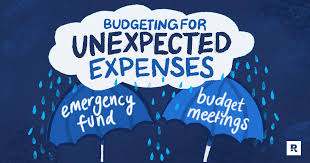Effective budgeting is crucial for achieving financial stability and success. As we step into 2024, it’s essential to adopt updated budgeting strategies to meet evolving financial challenges and goals. This comprehensive guide will explore the most effective budgeting strategies for 2024, providing practical tips and insights to help you manage your finances efficiently.

1. Embrace Digital Budgeting Tools

1.1. Why Digital Tools?
In 2024, digital budgeting tools have become more sophisticated, offering features that simplify tracking and managing your finances. These tools can integrate with your bank accounts, categorize expenses, and provide real-time insights.
- Key Tools: Apps like Mint, YNAB (You Need a Budget), and PocketGuard.
- Benefits: Automated tracking, customizable reports, and ease of use.

1.2. How to Choose the Right Tool
Select a budgeting tool that aligns with your financial goals and preferences. Look for features like bill reminders, goal setting, and expense categorization. Ensure the tool offers data security and integrates with your financial institutions.
2. Implement the 50/30/20 Rule
2.1. Understanding the Rule
The 50/30/20 rule is a simple budgeting method that allocates your income into three categories:
- 50% Needs: Essentials like housing, utilities, and groceries.
- 30% Wants: Non-essential expenses like dining out, entertainment, and travel.
- 20% Savings and Debt Repayment: Savings, investments, and paying off debt.

2.2. Why It Works
This rule provides a balanced approach to budgeting, ensuring you cover your essentials while allowing for discretionary spending and saving. It simplifies financial planning and helps maintain a healthy financial life.
3. Set SMART Financial Goals

3.1. What Are SMART Goals?
SMART goals are Specific, Measurable, Achievable, Relevant, and Time-bound. Setting SMART financial goals helps you create clear objectives and a roadmap for achieving them.
- Specific: Define exactly what you want to achieve.
- Measurable: Determine how you will measure progress.
- Achievable: Set realistic and attainable goals.
- Relevant: Ensure the goals align with your overall financial plans.
- Time-bound: Set a deadline for achieving the goals.

3.2. How to Apply SMART Goals
To apply SMART goals, start by identifying your financial objectives, such as saving for a vacation or paying off debt. Break these goals into smaller, actionable steps and track your progress regularly to stay on target.
4. Automate Savings and Investments
4.1. Benefits of Automation
Automating your savings and investments ensures that you consistently contribute to your financial goals without having to manually transfer funds each month. This approach reduces the temptation to spend and helps you build wealth more efficiently.
- Savings Accounts: Set up automatic transfers to your savings account.
- Investments: Use automated investment platforms or robo-advisors.

4.2. Setting Up Automation
Most banks and investment platforms offer options for setting up automatic transfers. Decide on the amount and frequency of transfers, and ensure that these transactions align with your budget and financial goals.
5. Review and Adjust Your Budget Regularly
5.1. Why Regular Reviews Are Important
Reviewing your budget regularly helps you track your progress, identify areas for improvement, and adjust for any changes in your financial situation. It ensures that your budget remains relevant and effective in meeting your goals.
- Frequency: Monthly or quarterly reviews are recommended.
- Adjustments: Modify your budget based on changes in income, expenses, or financial goals.

5.2. How to Conduct a Budget Review
Compare your actual spending with your budgeted amounts. Analyze any discrepancies and adjust your budget or spending habits accordingly. Use your budgeting tool’s reporting features to identify trends and areas where you can improve.
6. Focus on Reducing Unnecessary Expenses
6.1. Identifying Unnecessary Expenses
Review your spending to identify non-essential expenses that can be reduced or eliminated. Common areas include subscription services, dining out, and impulse purchases.
- Tracking: Use your budgeting tool to categorize and analyze spending.
- Prioritizing: Focus on reducing expenses that offer little value.

6.2. Strategies for Cutting Costs
Consider alternatives like cooking at home instead of dining out, canceling unused subscriptions, or finding cheaper alternatives for everyday purchases. Implementing these changes can free up more funds for savings and investments.
7. Plan for Unexpected Expenses

7.1. Creating an Emergency Fund
An emergency fund is crucial for covering unexpected expenses such as medical bills, car repairs, or job loss. Aim to save at least three to six months’ worth of living expenses.
- Building the Fund: Start small and gradually increase contributions.
- Access: Keep the fund in a separate, easily accessible account.

7.2. Using Your Emergency Fund Wisely
Only use your emergency fund for genuine emergencies. Avoid dipping into it for non-urgent expenses, as this can undermine your financial safety net.
Conclusion
Effective budgeting in 2024 requires a combination of modern tools, strategic planning, and regular adjustments. By embracing digital tools, implementing the 50/30/20 rule, setting SMART goals, automating savings, and reviewing your budget regularly, you can manage your finances more efficiently and achieve your financial objectives. Additionally, focusing on reducing unnecessary expenses and planning for unexpected costs will further enhance your financial stability.


